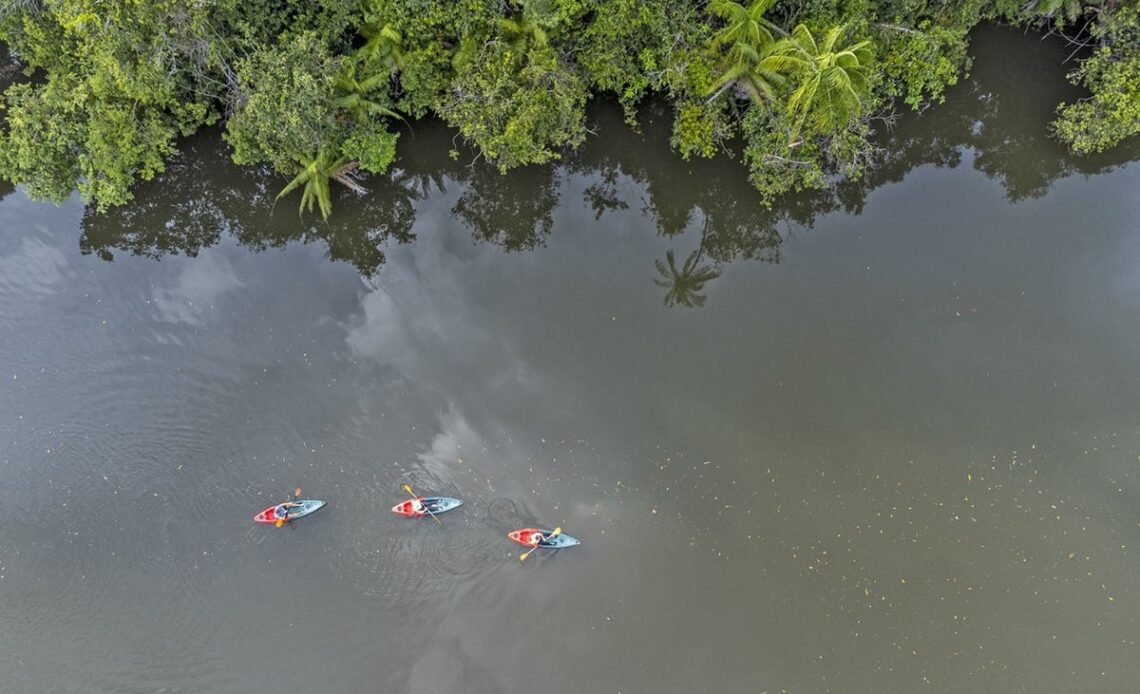I woke with a start, the sweat cold on my forehead, without knowing why. The close air of the stormy evening had condensed into still, cool night. The forest hissed, whirred, chirruped with frogs and insects.
Somewhere far off the eerie bell-tone of an owlet rang. I could picture the bird high on a dripping branch – yellow eyes, fluffed-up feathers. The patterns of calls lulled me back into sleep. It had been a bad dream that woke me; nothing more.
Then a noise broke the night as sharply as lightning across the sky. A scream? No: a low, plaintive howl like a dog’s rising slowly into caterwaul, then falling in a bubbling rush of yaps and whoops.
It was unmistakable. Gibbons!
I grabbed my torch, stumbled out of the bed, and sent a beam into the treeline by the river. The air was velvety. Moths fluttered. Nothing.
Then suddenly I saw movement; a glint of eyeshine. It was gibbons! Wild gibbons, right outside my tent.
Finally, I’d found them. I wanted to ring home, to tell everybody. But here in Cambodia’s Cardamom Mountains there was no signal, no wifi, no contact. The only option was to savour the moment and file it away in my mind.
A Cambodian gibbon in the forests near Siem Reap
(Getty Images/iStockphoto)
The Cardamoms sit in the heart of one of the last great stretches of coastal rainforest in Southeast Asia: a corrugated landscape of steamy green swamps, steep rainforest-rich ridges and caramel-brown rivers. It’s the landscape you fly over on your way from Bangkok to Angkor; or roll past on the country’s new highway between Phnom Penh and the talc-white beaches of Cambodia’s tropical islands. It’s a place even backpackers miss.
The mountains’ perfumed name had seduced me years ago, when I stumbled across it on Google Maps. I imagined scented hills and fragrant trees. Then a search revealed something more interesting: orchid and bromeliad-dripping forests filled with wild elephants, clouded leopards, pangolins, critically endangered Siamese crocodiles… and gibbons. I’d always wanted to see these most elusive of apes, those high-tree swingers that spend their lives in the canopy of great, untroubled forests.
I hadn’t had a chance to visit this paradise before the pandemic. I waited patiently. Then, as Covid diminished, good news from Cambodia – as well as a reopening to tourists, the country announced a…
Click Here to Read the Full Original Article at The Independent Travel…
